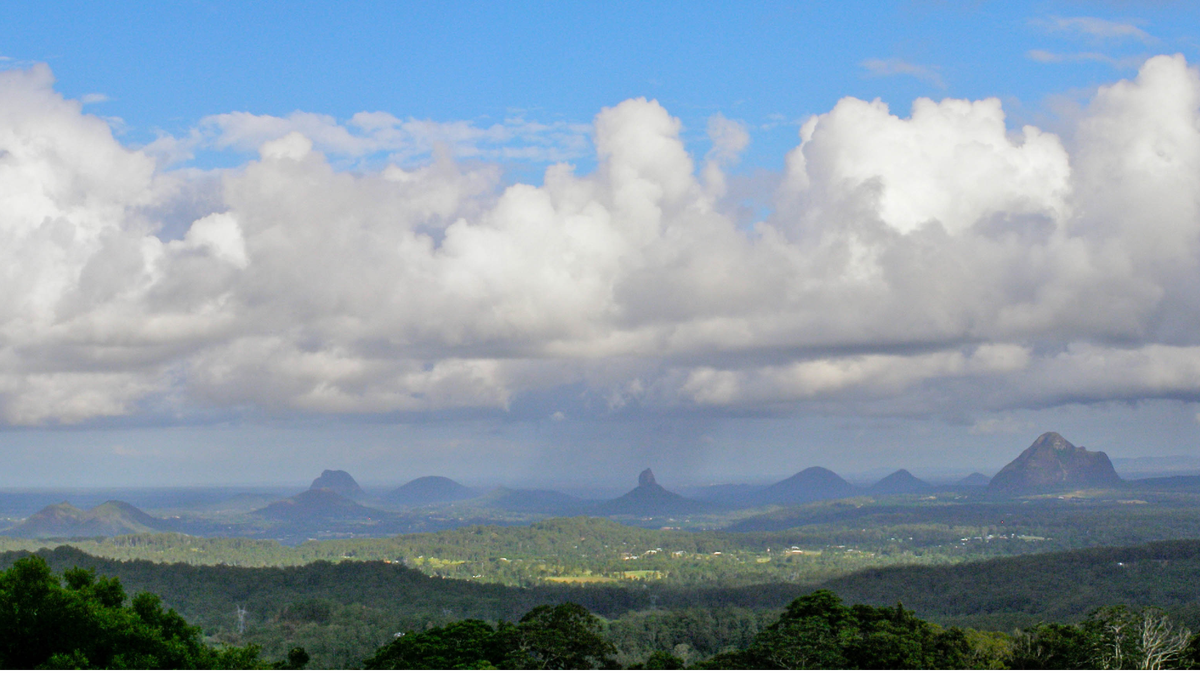Mary Cairncross Scenic Reserve boasts a spectacular view of the Glass House Mountains.
By looking through a geological lens we gain an insight into the powerful forces that have created these mountains and continue to shape the landscape.
Can you imagine a time when the mountains were hidden hundreds of metres beneath the surface?
Read the geological story below or watch this video to learn more .
65 million years ago Australia was part of the ancient super-continent Gondwana. It was much further south and had a much wetter climate. Australia was covered in tropical rainforests dominated by ferns, conifers and cycads. Slowly but dramatically, Australia separated from Gondwana and began drifting northwards.
Between 30 and 22 million years ago, southeast Queensland was rocked by volcanic activity, as the continent moved over a hot-spot in the Earth's mantle beneath the crust. Volcanoes began to erupt basalt lava flows that filled valleys. This created broad, gently sloping plains and shield-shaped mountains.
25 million years ago numerous dome-like plugs of magma were forced through the surrounding older rocks, filling volcanic vents or subsurface bulges (laccoliths).
Over millennia, the soft sandstone rock has worn away while the mountains have resisted. The exposed plugs are the steep-sided peaks of the Glass House Mountains.
As Australia's climate has become more arid, rainforest cover has retreated to higher, wetter areas such as the Maleny plateau. Plant families like Myrtaceae (Eucalypts) and Proteaceae (Banksias) evolved from ancient rainforest systems to these drier conditions. The erosion of basalt deposits has created the red, fertile soils for which the Blackall Range is renowned. Such rich soils have enabled rainforests like Mary Cairncross Scenic Reserve to thrive.
The vast volume of material that has eroded over geological time to reveal the Glass House Mountains is testament to the powerful forces which shape the Sunshine Coast landscape.
References
W.F Wilmott & N.C. Stevens, 1988, Rocks and Landscapes of the Sunshine Coast. Geological Society of Australia
Warwick Willmott, 2004, Rocks and Landscapes of the National Parks of Southern Queensland. Geological Society of Australia.
